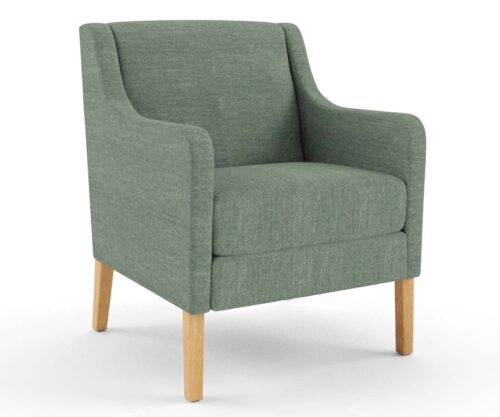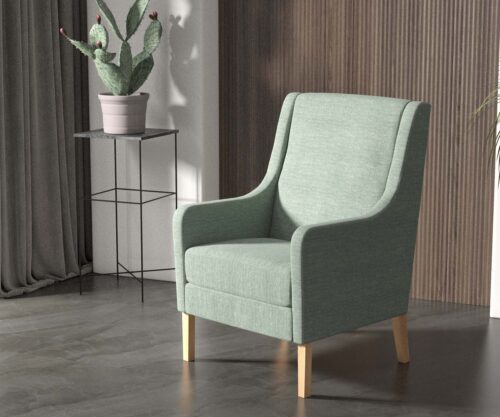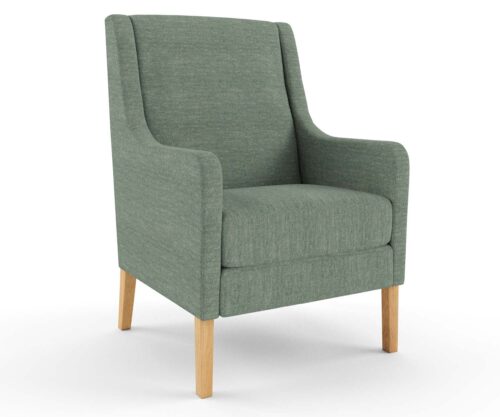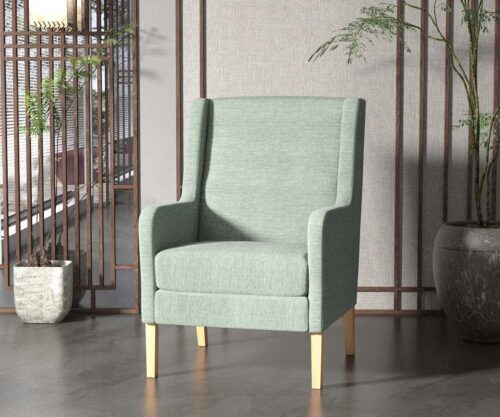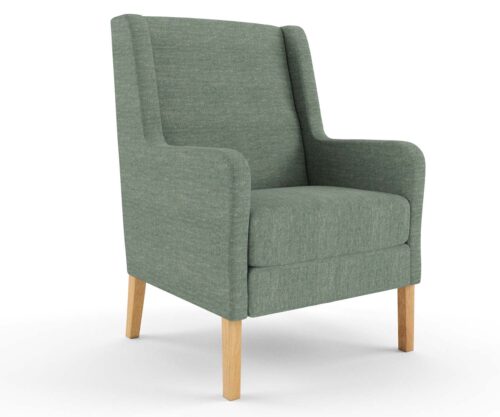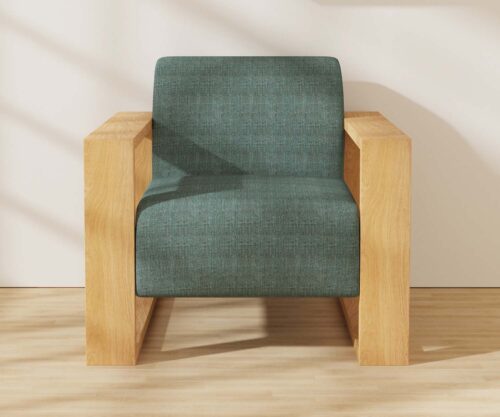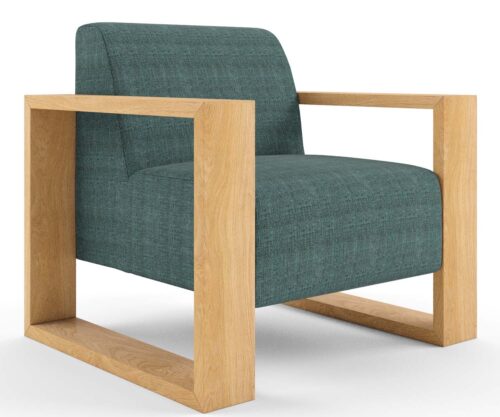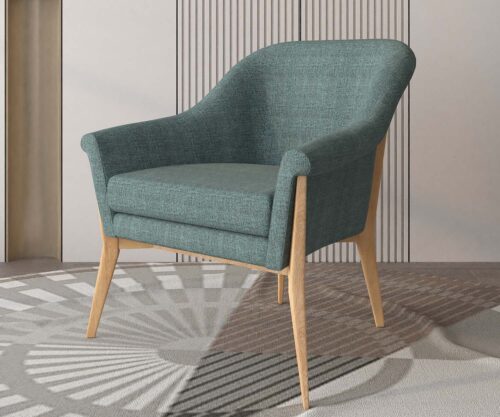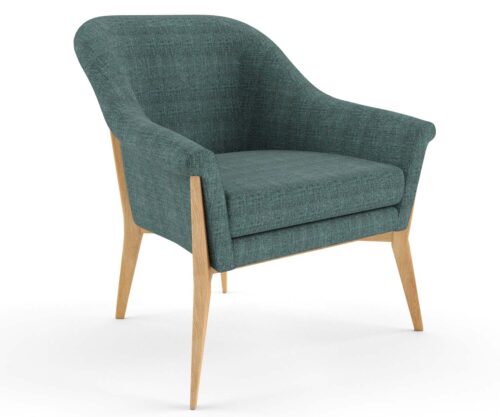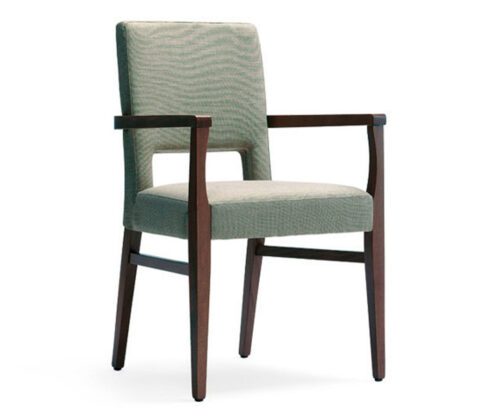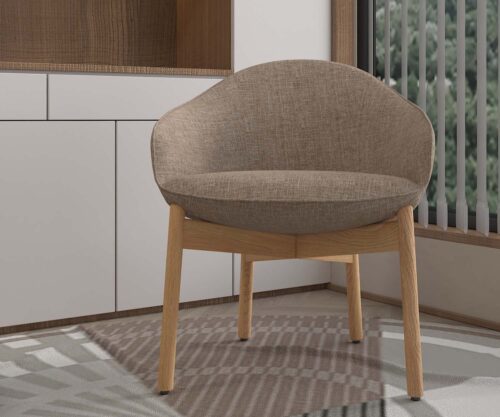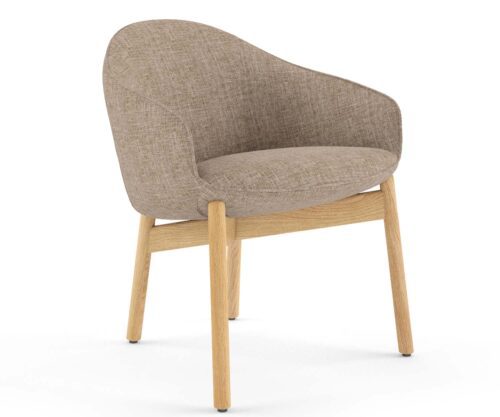Evidence-based Recommendations for Aged Care Chair Design

How to choose the best aged care chairs in Australia?
Read on for 3 secrets for choosing the perfect chair.
You have the task of ordering aged care furniture for your aged care facility from your local Australian furniture manufacturer. It’s important to make sure you choose the best chairs for your residents, so that they can find comfort and safety.
How do you make sure that the aged care chairs you are ordering are going to meet the needs of residents and avoid discomfort and possible musculoskeletal damage that may come with sitting on poorly designed chairs?
Sure, your in-house physiotherapist or occupational therapist will have some guidelines that they refer to, based on general recommendations for fitting a chair to an individual, but what are the evidence-based recommendations for aged care chair design?
How do you address the issues that residents and staff have with the chairs they use at aged care facilities?
Armrests, Seat Height and Seat Depth: Getting the balance right to achieve the best aged care chair design
What should you consider in terms of armrests, seat height and seat depth to increase the access to comfortable, easy-to-use chairs for a wider range of the aged care population (not to mention helping your facility improve your service environment, thereby helping to comply with Aged Care Quality Standards).
Choosing the wrong aged care chairs can negatively impact residents and staff, particularly when it comes to the mobility and independence of residents. Many residents have restricted mobility which may make it difficult to get in and out of poorly designed chairs without asking for assistance first. Lack of independence due to poor chair design can lead to depression, under-nutrition due to reduced intake of food or drink, reduced social interaction, an increase in the chance of falls and loss of confidence due to falling. Mobility and independence of residents can be maintained with suitable aged care seating design.
Poorly designed aged care chairs can also lead to poor postural stability which may increase pain, fatigue, venous thrombosis risk and pressure sores.
Chairs used in aged care facilities that are designed without the needs of residents in mind can also be uncomfortable. Within the aged care context, an uncomfortable chair takes on a whole new meaning when you consider that many aged care residents have cognitive impairments, and any discomfort may lead to frustration and behavioural issues.
So, what should you be looking for to make sure that the aged care seating you choose is fit-for-purpose for both residents and staff? The following recommendations are based on research conducted by Queensland University of Technology (QUT) into seating in aged care.
1. Armrests: Armrests should be designed to assist residents to stand without needing help.
Sit-to-stand (STS) transfer is the act of standing from a seated position and is considered one of the most important measures of physical function. This ability is key to maintaining independence and is an important factor for aged care residents when choosing a chair. The QUT research indicates that when armrests are available, they are used 100% of the time. Armrests are viewed as a vital tool in aiding STS transitions, providing residents with a way to stabilise themselves as they rise.
When seated, armrests also provide a sense of security and independence for residents because they know that when it comes time to stand up, they can do so without assistance.
When evaluating armrests for aged care seating, look for armrests that are easy to grip; not too wide and residents should easily be able to get their hands around them. Armrests should extend to the edge of the seat and should be lower at the back than the front.
2. Seat height: Seats should be high enough to assist in STS transitions, thereby increasing the independence of residents while reducing the strain on carers.
When it comes to assisting with STS transitions, seat height is another important aged care chair design consideration. Research into seat heights in aged care centres indicates that most seats are simply too low for easy STS. A low seat height makes it difficult for some aged care residents to rise from their chairs. This reduces the independence of aged care residents and puts a strain on carers who, in some cases, hurt their backs when assisting residents to stand.
A higher seat height reduces the strength and exertion required to rise from a chair as there is less distance to travel. People who have had hip fractures or replacements or who have arthritis also benefit from higher seats.
However, some aged care residents may not be more comfortable using higher seats due to reduced stability while seated because their feet may not be able to touch the ground.
To address the issue of seat height, some aged care facilities offer chairs with adjustable seat heights. Alternatively, providing a variety of chairs with varying seat heights is another way of addressing this issue.
3. Seat size: The depth and width of seats should reduce an aged care resident’s reliance on pillows and increase comfort while allowing for easier STS transfers.
Another crucial element for aged care chair design is the seat size, meaning seat depth and width. Getting the seat size right is important for easier STS transfers and to ensure comfortable seating for aged care residents.
Unfortunately, much anecdotal evidence suggests that a lot of aged care seating is too deep. If seating is too deep, residents tend to slump so that their feet touch the floor. This is not only an uncomfortable seating position but may also increase the risk of falls if a resident chooses to tuck their feet under the chair.
The seat depth should support the full length of the thighs without the person needing to slouch or lean to support their back. There should also be space behind the knees for circulation. Aged care facilities may consider making chairs adjustable or providing a range of chairs with differing seat depths.
Aged Care Seating should be fit for purpose: striking a balance between comfort, ease of use and independence
Providing fit-for-purpose seating within aged care facilities is an issue of equity. Finding the right balance between seat height, depth and armrests goes a long way towards proving comfortable and easy-to-use chairs for a larger portion of the aged care population.
FAQs on Choosing Aged Care Chairs
What factors should be considered when choosing aged care chairs?
When selecting aged care chairs, important factors to consider include comfort, durability, ease of use, safety features, and the specific needs of the residents, such as mobility requirements and any existing health conditions.
How do you ensure that aged care chairs provide adequate support for residents?
Ensuring adequate support involves choosing chairs with proper ergonomic design, sufficient padding, and adjustable features. Consider chairs with lumbar support, adjustable height, and features that cater to the individual needs of residents.
Are there specific safety features to look for in aged care chairs?
Look for chairs with stable and non-slip bases, easy-to-operate locking mechanisms, and features like armrests and grab handles that assist residents in sitting down or standing up safely.
Can aged care chairs be customized for individual needs?
Many aged care chairs can be customized to meet individual needs. This may include options for different sizes, materials, and additional features to accommodate specific health requirements or personal preferences.
How do you ensure that aged care chairs are easy to clean and maintain?
Choose chairs with easily cleanable materials, removable and washable cushions, and designs that minimize the risk of dirt or germs accumulating in hard-to-reach places. This is essential for maintaining a hygienic environment in aged care facilities.
What role do mobility considerations play in selecting aged care chairs?
Mobility considerations are critical. Choose chairs that facilitate easy movement for residents, considering features like wheels, swivel bases, and lightweight construction to allow for smooth transitions and mobility support.
Can technology be integrated into aged care chairs to enhance functionality?
Yes, technology integration is possible. Some aged care chairs come with features like remote-controlled adjustments, pressure relief mechanisms, or sensors that monitor sitting times, contributing to the overall well-being of residents.
How do you balance aesthetics with functionality when choosing aged care chairs?
Balancing aesthetics and functionality involves selecting chairs that not only meet the practical needs of residents but also contribute to the overall design and ambiance of the aged care environment. Look for designs that are both pleasing and functional.
Are there weight capacity considerations when choosing aged care chairs?
Yes, weight capacity is a crucial consideration. Ensure that the chosen chairs have a weight capacity that accommodates the range of residents who will be using them, promoting safety and preventing potential issues. Ask your furniture manufacturer about weight capacity of chairs and whether or not the chairs can be reinforced if need be.
What resources are available for guidance on choosing appropriate aged care chairs?
Resources for guidance include consulting with occupational therapists, seeking recommendations from healthcare professionals, and referring to industry standards and guidelines. Additionally, suppliers and manufacturers often provide product specifications and assistance in choosing chairs suitable for aged care settings.
Some of our favourite chairs designed specifically for residents of aged care and retirement living
More News
Evidence-based Recommendations for Aged Care Chair Design

How to choose the best aged care chairs in Australia?
Read on for 3 secrets for choosing the perfect chair.
You have the task of ordering aged care furniture for your aged care facility from your local Australian furniture manufacturer. It’s important to make sure you choose the best chairs for your residents, so that they can find comfort and safety.
How do you make sure that the aged care chairs you are ordering are going to meet the needs of residents and avoid discomfort and possible musculoskeletal damage that may come with sitting on poorly designed chairs?
Sure, your in-house physiotherapist or occupational therapist will have some guidelines that they refer to, based on general recommendations for fitting a chair to an individual, but what are the evidence-based recommendations for aged care chair design?
How do you address the issues that residents and staff have with the chairs they use at aged care facilities?
Armrests, Seat Height and Seat Depth: Getting the balance right to achieve the best aged care chair design
What should you consider in terms of armrests, seat height and seat depth to increase the access to comfortable, easy-to-use chairs for a wider range of the aged care population (not to mention helping your facility improve your service environment, thereby helping to comply with Aged Care Quality Standards).
Choosing the wrong aged care chairs can negatively impact residents and staff, particularly when it comes to the mobility and independence of residents. Many residents have restricted mobility which may make it difficult to get in and out of poorly designed chairs without asking for assistance first. Lack of independence due to poor chair design can lead to depression, under-nutrition due to reduced intake of food or drink, reduced social interaction, an increase in the chance of falls and loss of confidence due to falling. Mobility and independence of residents can be maintained with suitable aged care seating design.
Poorly designed aged care chairs can also lead to poor postural stability which may increase pain, fatigue, venous thrombosis risk and pressure sores.
Chairs used in aged care facilities that are designed without the needs of residents in mind can also be uncomfortable. Within the aged care context, an uncomfortable chair takes on a whole new meaning when you consider that many aged care residents have cognitive impairments, and any discomfort may lead to frustration and behavioural issues.
So, what should you be looking for to make sure that the aged care seating you choose is fit-for-purpose for both residents and staff? The following recommendations are based on research conducted by Queensland University of Technology (QUT) into seating in aged care.
1. Armrests: Armrests should be designed to assist residents to stand without needing help.
Sit-to-stand (STS) transfer is the act of standing from a seated position and is considered one of the most important measures of physical function. This ability is key to maintaining independence and is an important factor for aged care residents when choosing a chair. The QUT research indicates that when armrests are available, they are used 100% of the time. Armrests are viewed as a vital tool in aiding STS transitions, providing residents with a way to stabilise themselves as they rise.
When seated, armrests also provide a sense of security and independence for residents because they know that when it comes time to stand up, they can do so without assistance.
When evaluating armrests for aged care seating, look for armrests that are easy to grip; not too wide and residents should easily be able to get their hands around them. Armrests should extend to the edge of the seat and should be lower at the back than the front.
2. Seat height: Seats should be high enough to assist in STS transitions, thereby increasing the independence of residents while reducing the strain on carers.
When it comes to assisting with STS transitions, seat height is another important aged care chair design consideration. Research into seat heights in aged care centres indicates that most seats are simply too low for easy STS. A low seat height makes it difficult for some aged care residents to rise from their chairs. This reduces the independence of aged care residents and puts a strain on carers who, in some cases, hurt their backs when assisting residents to stand.
A higher seat height reduces the strength and exertion required to rise from a chair as there is less distance to travel. People who have had hip fractures or replacements or who have arthritis also benefit from higher seats.
However, some aged care residents may not be more comfortable using higher seats due to reduced stability while seated because their feet may not be able to touch the ground.
To address the issue of seat height, some aged care facilities offer chairs with adjustable seat heights. Alternatively, providing a variety of chairs with varying seat heights is another way of addressing this issue.
3. Seat size: The depth and width of seats should reduce an aged care resident’s reliance on pillows and increase comfort while allowing for easier STS transfers.
Another crucial element for aged care chair design is the seat size, meaning seat depth and width. Getting the seat size right is important for easier STS transfers and to ensure comfortable seating for aged care residents.
Unfortunately, much anecdotal evidence suggests that a lot of aged care seating is too deep. If seating is too deep, residents tend to slump so that their feet touch the floor. This is not only an uncomfortable seating position but may also increase the risk of falls if a resident chooses to tuck their feet under the chair.
The seat depth should support the full length of the thighs without the person needing to slouch or lean to support their back. There should also be space behind the knees for circulation. Aged care facilities may consider making chairs adjustable or providing a range of chairs with differing seat depths.
Aged Care Seating should be fit for purpose: striking a balance between comfort, ease of use and independence
Providing fit-for-purpose seating within aged care facilities is an issue of equity. Finding the right balance between seat height, depth and armrests goes a long way towards proving comfortable and easy-to-use chairs for a larger portion of the aged care population.
FAQs on Choosing Aged Care Chairs
What factors should be considered when choosing aged care chairs?
When selecting aged care chairs, important factors to consider include comfort, durability, ease of use, safety features, and the specific needs of the residents, such as mobility requirements and any existing health conditions.
How do you ensure that aged care chairs provide adequate support for residents?
Ensuring adequate support involves choosing chairs with proper ergonomic design, sufficient padding, and adjustable features. Consider chairs with lumbar support, adjustable height, and features that cater to the individual needs of residents.
Are there specific safety features to look for in aged care chairs?
Look for chairs with stable and non-slip bases, easy-to-operate locking mechanisms, and features like armrests and grab handles that assist residents in sitting down or standing up safely.
Can aged care chairs be customized for individual needs?
Many aged care chairs can be customized to meet individual needs. This may include options for different sizes, materials, and additional features to accommodate specific health requirements or personal preferences.
How do you ensure that aged care chairs are easy to clean and maintain?
Choose chairs with easily cleanable materials, removable and washable cushions, and designs that minimize the risk of dirt or germs accumulating in hard-to-reach places. This is essential for maintaining a hygienic environment in aged care facilities.
What role do mobility considerations play in selecting aged care chairs?
Mobility considerations are critical. Choose chairs that facilitate easy movement for residents, considering features like wheels, swivel bases, and lightweight construction to allow for smooth transitions and mobility support.
Can technology be integrated into aged care chairs to enhance functionality?
Yes, technology integration is possible. Some aged care chairs come with features like remote-controlled adjustments, pressure relief mechanisms, or sensors that monitor sitting times, contributing to the overall well-being of residents.
How do you balance aesthetics with functionality when choosing aged care chairs?
Balancing aesthetics and functionality involves selecting chairs that not only meet the practical needs of residents but also contribute to the overall design and ambiance of the aged care environment. Look for designs that are both pleasing and functional.
Are there weight capacity considerations when choosing aged care chairs?
Yes, weight capacity is a crucial consideration. Ensure that the chosen chairs have a weight capacity that accommodates the range of residents who will be using them, promoting safety and preventing potential issues. Ask your furniture manufacturer about weight capacity of chairs and whether or not the chairs can be reinforced if need be.
What resources are available for guidance on choosing appropriate aged care chairs?
Resources for guidance include consulting with occupational therapists, seeking recommendations from healthcare professionals, and referring to industry standards and guidelines. Additionally, suppliers and manufacturers often provide product specifications and assistance in choosing chairs suitable for aged care settings.
Some of our favourite chairs designed specifically for residents of aged care and retirement living
Commercial furniture by room
Based in Brisbane, we’re an Australian manufacturer of health and aged care furniture, retirement living furniture, hotel and accommodation furniture and student accommodation furniture. We also supply a range of commercial office furniture.
Is your commercial furniture built to last?
Not sure? Get your Furniture Quality Checklist today.
Discover what you need to know before purchasing commercial furniture. Confidently order furniture without compromising on quality, style, and the comfort and safety of your clients.
PLUS, sign up for Retirement Living and Aged Care Industry News.


